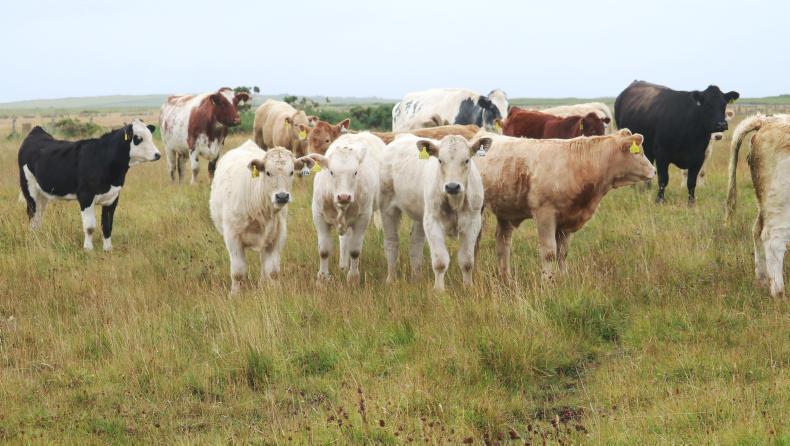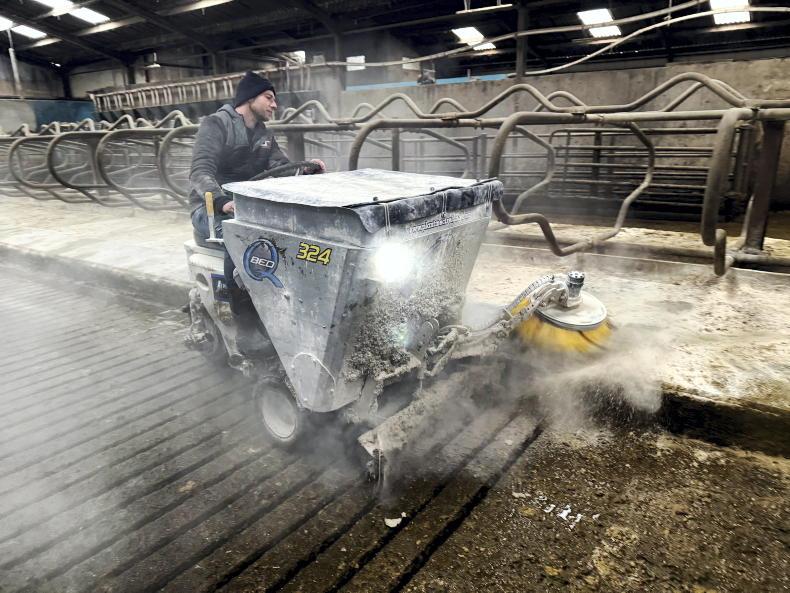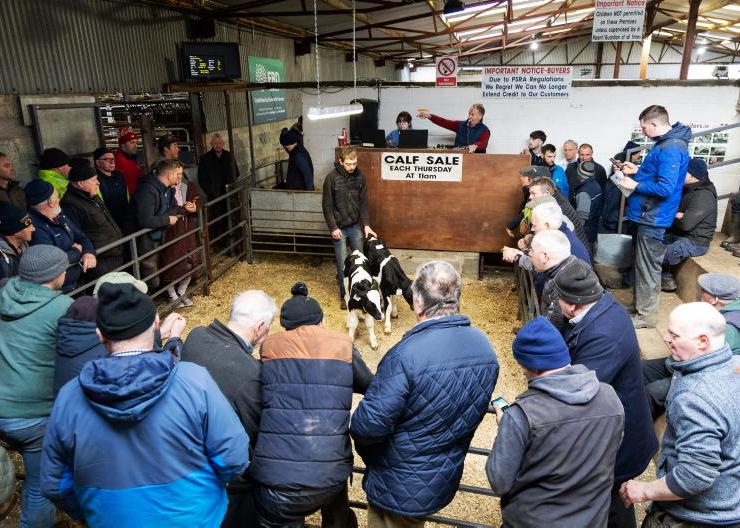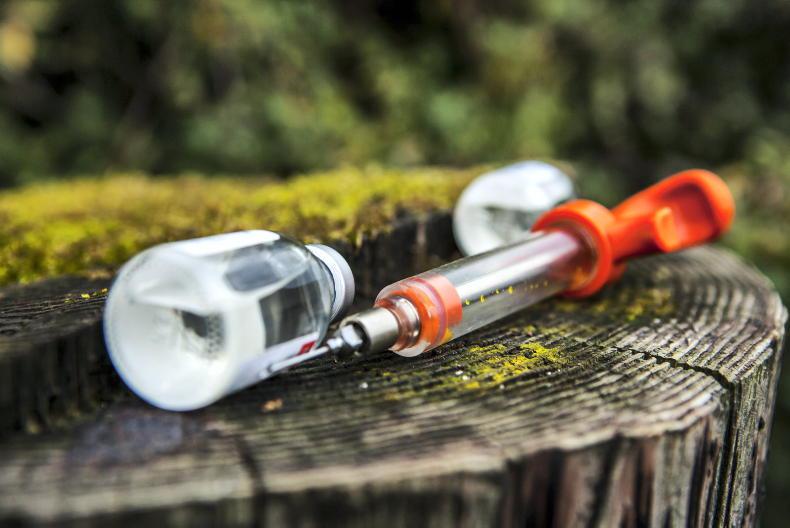The yard is positively heaving with fodder here at the moment. This is mainly due to the excellent grass growing conditions experienced this year, but also to a slight increase in the number of acres cut for silage.
Sitting down with the programme advisers to complete my fodder budget for the coming winter, it was comforting to hear we have enough silage to nearly cover two standard winters. However, the way the weather patterns have been over the last few years, calculating for an average winter is difficult – as it is hard to know what a standard winter is any more.
We calculated that there are 1,337t of fresh weight in the pit. It measures at 140ft × 43ft × 10ft, which gives us 60,200 divided by 45 (conversion factor), leaving us with 1,337t. At 28% dry matter (DM) this equates to 374t DM. Along with this we have a further 1,085t as baled silage (1,670 bales at 650kg/bale), which gives us a further 380t DM with bales at 35%DM .
Throughout the winter the cow diet will be 15-18kg fresh weight of silage plus ad-lib access to straw. This has worked well in previous years, as the majority of our cows come into the house in very good condition. Any older or poorer-conditioned cow will be separated and fed ad-lib silage to maintain body condition.

New feed barriers fitted in the youngstock shed.
While it may seem attractive to feed more silage to cows this winter because we have it, we do not want cows over-fit at calving time. Also the more silage we feed, the more bedding we will require as the diet becomes wetter. We find we use less straw by offering it ad-lib to cows, as it saves a lot more on bedding. Silage allowance will be increased six weeks out from calving.
We want to make best use of the silage in the yard. There will definitely be some carryover for the following winter. Ideally, this will be mainly pit silage as it will keep better than baled silage. Therefore, we need to try and use as much baled silage as we can. A small batch of thinner cows will be housed separately and offered baled silage ad-lib.
Preparation for weaning
The spring herd was taken in two weeks ago to get their vaccinations. All the calves here get a pneumonia vaccine plus a pasturella vaccine, as well as doing them for blackleg. Calves were also dosed for lungworm at the same time. Weaning can be a stressful time on calves, therefore dosing now to reduce any worm burden will minimise the pressure on calves’ lungs at weaning.
Weaning will commence in a week to 10 days’ time. The condition of the cows is very good across the whole herd. This is despite the last month to six weeks being far from ideal weather-wise.
Caithness has been getting nearly constant rain and it has taken its toll on both grass growth and ground conditions. We decided to move the cows and calves off the paddocks when we had them in for their vaccinations. They were unsettled on the grass fields and constantly looking for a move. They were also starting to poach, so we moved them up to the hill ground.

The summer-born calves at grass.
Deferred grazing
The plan had been to preserve this hill ground for as long as possible to shorten the feeding period for the summer-calving cows that are out-wintered on this hill. However, the weather conditions forced our hand on this one. There should still be a decent amount of grazing for the summer cows at the start of winter and luckily we are not short of extra bales if we need them.
Feed barriers
The feed barriers in the young stock shed needed changing this year. The previous ones had been in the shed since it was built, so had served us well for 27 years. We have changed from individual head spaces to a simple bar above and below their heads. It should increase the feed space along the troughs.
We also fitted new crash barriers 2ft from the feed rail to keep the feed pushed into the cattle. All in, with feed barriers and new gates and the labour, it will cost £5,600. That’s less than £210/year if we get another 27 years out of them.
We have also ordered a new cattle crate as the old one has seen better days. At £6,000 it seems like a lot of money, but when you are handling 170 cows and their offspring a few times a year, it is a necessary piece of kit for the safety of both operator and animal.
Scanning
Scanning will take place for the spring herd in early November. The summer herd is not scanned as it goes straight to the hill for wintering once weaned. The bulls had 12 weeks with the spring cows and will get just 10 weeks with the summer herd – which ends this weekend.
This year 18 heifers were bulled to join the spring herd and a further 27 to join the summer herd. Heifers run with a Shorthorn bull, who has been very easily calved in previous years.
The summer heifers got just six weeks with the bull as we do not want heifers calving late in the season. Typically, heifers take a little bit longer to go back in calf as second-calvers, therefore if they were late calving as heifers they would not be back in-calf again in time next year.
It is better to have a few of these heifers not in-calf now, as they can still be finished before they are 30 months old.
Harvest
It has been a difficult harvest in Caithness. We finally got it all cut last weekend in a short period of good weather.
This year we had 50ac of barley – a slight increase in acres on previous years, as we increased the stocking rate on the grazing ground.
The yard is positively heaving with fodder here at the moment. This is mainly due to the excellent grass growing conditions experienced this year, but also to a slight increase in the number of acres cut for silage.
Sitting down with the programme advisers to complete my fodder budget for the coming winter, it was comforting to hear we have enough silage to nearly cover two standard winters. However, the way the weather patterns have been over the last few years, calculating for an average winter is difficult – as it is hard to know what a standard winter is any more.
We calculated that there are 1,337t of fresh weight in the pit. It measures at 140ft × 43ft × 10ft, which gives us 60,200 divided by 45 (conversion factor), leaving us with 1,337t. At 28% dry matter (DM) this equates to 374t DM. Along with this we have a further 1,085t as baled silage (1,670 bales at 650kg/bale), which gives us a further 380t DM with bales at 35%DM .
Throughout the winter the cow diet will be 15-18kg fresh weight of silage plus ad-lib access to straw. This has worked well in previous years, as the majority of our cows come into the house in very good condition. Any older or poorer-conditioned cow will be separated and fed ad-lib silage to maintain body condition.

New feed barriers fitted in the youngstock shed.
While it may seem attractive to feed more silage to cows this winter because we have it, we do not want cows over-fit at calving time. Also the more silage we feed, the more bedding we will require as the diet becomes wetter. We find we use less straw by offering it ad-lib to cows, as it saves a lot more on bedding. Silage allowance will be increased six weeks out from calving.
We want to make best use of the silage in the yard. There will definitely be some carryover for the following winter. Ideally, this will be mainly pit silage as it will keep better than baled silage. Therefore, we need to try and use as much baled silage as we can. A small batch of thinner cows will be housed separately and offered baled silage ad-lib.
Preparation for weaning
The spring herd was taken in two weeks ago to get their vaccinations. All the calves here get a pneumonia vaccine plus a pasturella vaccine, as well as doing them for blackleg. Calves were also dosed for lungworm at the same time. Weaning can be a stressful time on calves, therefore dosing now to reduce any worm burden will minimise the pressure on calves’ lungs at weaning.
Weaning will commence in a week to 10 days’ time. The condition of the cows is very good across the whole herd. This is despite the last month to six weeks being far from ideal weather-wise.
Caithness has been getting nearly constant rain and it has taken its toll on both grass growth and ground conditions. We decided to move the cows and calves off the paddocks when we had them in for their vaccinations. They were unsettled on the grass fields and constantly looking for a move. They were also starting to poach, so we moved them up to the hill ground.

The summer-born calves at grass.
Deferred grazing
The plan had been to preserve this hill ground for as long as possible to shorten the feeding period for the summer-calving cows that are out-wintered on this hill. However, the weather conditions forced our hand on this one. There should still be a decent amount of grazing for the summer cows at the start of winter and luckily we are not short of extra bales if we need them.
Feed barriers
The feed barriers in the young stock shed needed changing this year. The previous ones had been in the shed since it was built, so had served us well for 27 years. We have changed from individual head spaces to a simple bar above and below their heads. It should increase the feed space along the troughs.
We also fitted new crash barriers 2ft from the feed rail to keep the feed pushed into the cattle. All in, with feed barriers and new gates and the labour, it will cost £5,600. That’s less than £210/year if we get another 27 years out of them.
We have also ordered a new cattle crate as the old one has seen better days. At £6,000 it seems like a lot of money, but when you are handling 170 cows and their offspring a few times a year, it is a necessary piece of kit for the safety of both operator and animal.
Scanning
Scanning will take place for the spring herd in early November. The summer herd is not scanned as it goes straight to the hill for wintering once weaned. The bulls had 12 weeks with the spring cows and will get just 10 weeks with the summer herd – which ends this weekend.
This year 18 heifers were bulled to join the spring herd and a further 27 to join the summer herd. Heifers run with a Shorthorn bull, who has been very easily calved in previous years.
The summer heifers got just six weeks with the bull as we do not want heifers calving late in the season. Typically, heifers take a little bit longer to go back in calf as second-calvers, therefore if they were late calving as heifers they would not be back in-calf again in time next year.
It is better to have a few of these heifers not in-calf now, as they can still be finished before they are 30 months old.
Harvest
It has been a difficult harvest in Caithness. We finally got it all cut last weekend in a short period of good weather.
This year we had 50ac of barley – a slight increase in acres on previous years, as we increased the stocking rate on the grazing ground.











SHARING OPTIONS